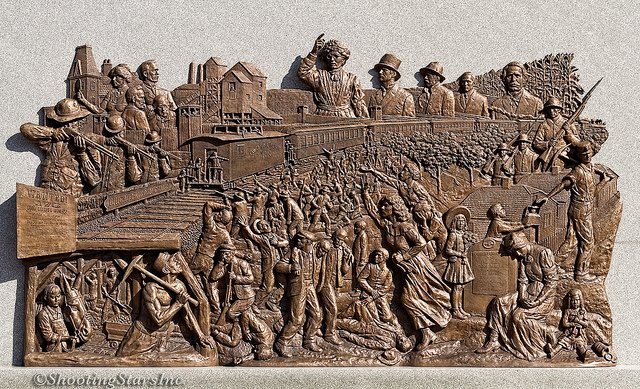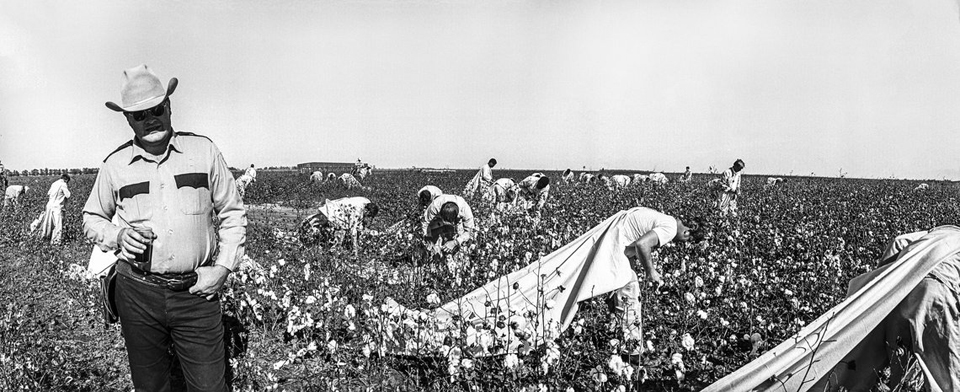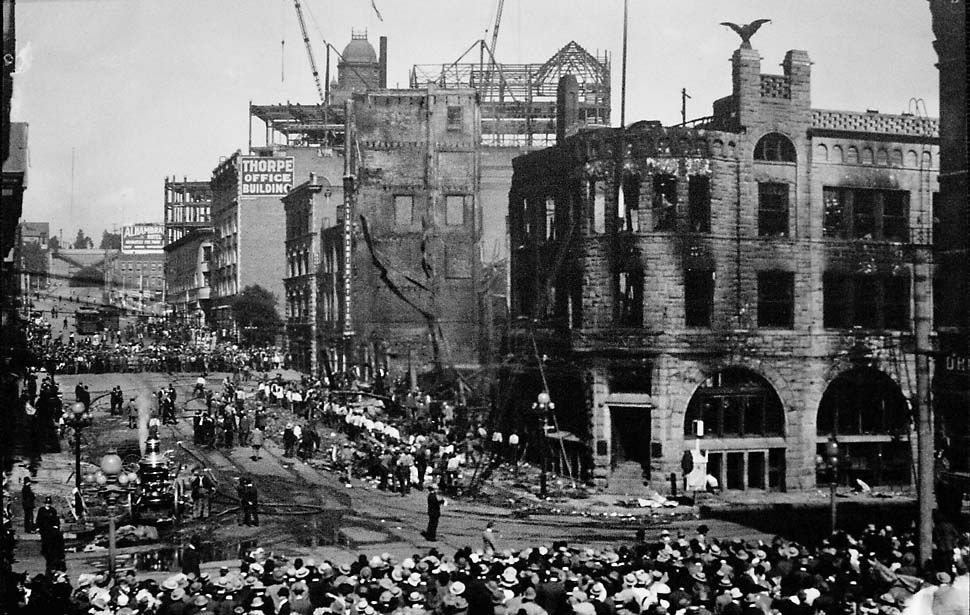
This Day in Labor History: October 12, 1898. A racialized battle over strikebreaking broke out in Virden, Illinois. Let's talk about how employers could so easily manipulate racism to promote their own interests and how white workers were more than happy to take that bait! 

The United Mine Workers of America was founded in 1890 as one of the rare industrial unions within the American Federation of Labor.
With coal so easy to mine, requiring little capital investment compared to hard rock mining, and with so many regions in the country having significant coal deposits, organizing the mines effectively was very difficult.
If the UMWA organized in Illinois and Kentucky, the only way to keep those victories was also to organize in West Virginia and Pennsylvania, or cost-cutting would destroy their wins.
This all lent an air of desperation to the long, hard struggles this union would have to undergo over the next several decades.
In 1897 and early 1898, the UMWA had a number of victories, especially in Illinois. Total membership jumped from 10,000 to 30,000 in just a few months.
Many operators came to an agreement that reduced working hours (which more operators were interested in as a way to cut down on the overproduction that constantly plagued this industry), wage increases, and future negotiations with the UMWA.
In September 1898, the UMWA had a huge battle against the Chicago-Virden Coal Company in Virden, Illinois. There were only a couple of major operators in Illinois who resisted the agreement with the union and Chicago-Virden led them.
Chicago-Virden locked out its unionized miners and went to the classic move of Gilded Age strikebreaking–travel south and offer relatively high wages to impoverished black labor without telling them they were busting a strike or lockout.
This became known and armed miners from around the state began showing up. The employer built a stockade for its men.
The first time the company tried to bring in scabs on September 24, UMWA representatives shouted out to the black workers that this was a strike and they would be scabbing. They refused to get off the train and it continued north to Springfield.
The tensions were high in the leadup to what would happen next. Reporters showed up. One compared the scene to the Spanish-American War, writing, “Virden to-night is like a town occupied by an army of men.
All that is needed is the uniforms of the soldiers of the United States and a visitor here might believe himself at Santiago or some other place where battles have been fought lately.” Strikers named the stockade Moro Castle, the same name as the Spanish fort in Havana.
On October 12, the next train came. This was a shipment of strikebreakers from Birmingham. But this time, thugs from the Thiel Detective Agency, one of the many anti-strikebreaking firms of the era, was armed and ready for battle.
When the train pulled into the station, the strikers surrounded it. At that moment, the Thiel thugs opened fire on the strikers. But the strikers also had guns. A full-fledged gun battle ensued. In the aftermath, seven strikers were killed and 30 wounded.
Four Thiel detectives were killed and five wounded. There were some strikebreakers pulled off the train and beaten, but the records do not say how many were hurt.
Evidently none were killed, but it’s sad but true that there were lots of massacres of African-Americans during these years where death numbers weren’t really counted because white people didn’t care.
So even if someone died, we might not know. Anyway, the train finally pulled away and the mines could not run without union labor.
The use of defensive violence by the strikers (at least against the Thiel thugs, if not the strikebreakers themselves) was seen as a revolutionary criminal act by the employer and much of the political class of Illinois.
But that state had elected a reformist governor named John Riley Tanner, who was known for being hated by both the Democratic and Republican political establishments, even though he was a Republican himself.
Despite demands that the governor intervene to clear out the strikers, instead he sent the National Guard to Virden to prevent any more attempts at strikebreaking.
He notably said that if another train of strikebreakers from out of state showed up, he would “shoot it to pieces with Gatling guns.”
But it was also impossible to separate this out from anti-black violence. Since the strikebreakers were black, this whole incident got framed as a racial issue more than a class issue.
The National Guard commander said, “If any negroes are brought into Pana [a nearby town] while I am in charge, and if they refuse orders to retreat when ordered to do so, I will order my men to fire. If I lose every man under my command no negroes shall land at Pana.”
Tanner did not have any legal authority to do what he did. He just did it. And as has happened so often in American history, a strike was won when the government-employer relationship, so frequently the dominant norm of this country, was neutralized.
The employers caved and the miners won their strike. Notably, part of the agreement was to make the mines whites-only, which the miners demanded.
It’s worth noting that this was against what UMWA president John Mitchell claimed was the ideology of his union. He had said, “We know no color or creed in our union. A colored man is as welcome to join as a white man and will have our support.”
But he also claimed that the miners were right here for resisting being thrown out of their homes and jobs. But at a union meeting leading up to the October 12 battle, he also openly called the strikebreakers “ex-convicts” and used other racialized language to demonize these men.
A resolution passed at the same meeting calling the black workers “an undesirable class” and a “body of cheap, ignorant laboring men.”
So race and class got conflated here, with racism being used to against other poor workers as a justification for the very reasonable position of opposing strikebreakers. Such is American history.
For decades after this, Virden was known as a sundown town, forcing any African-American out of the town by nightfall.
Further battles between the UMWA and mine owners over the very same issues in other Illinois towns took place over the next few years, which similar violence, racial dynamics, and intervention by Governor Tanner.
This thread borrowed from Michael K. Rosenow’s Death and Dying in the Working Class, 1865-1920, published by the University of Illinois Press, in 2015.
Back Wednesday for a brand new thread on Commonwealth v. Hunt, the landmark 1842 case on the right of workers to strike.
Try to not get too excited as you wait.
Try to not get too excited as you wait.
• • •
Missing some Tweet in this thread? You can try to
force a refresh







